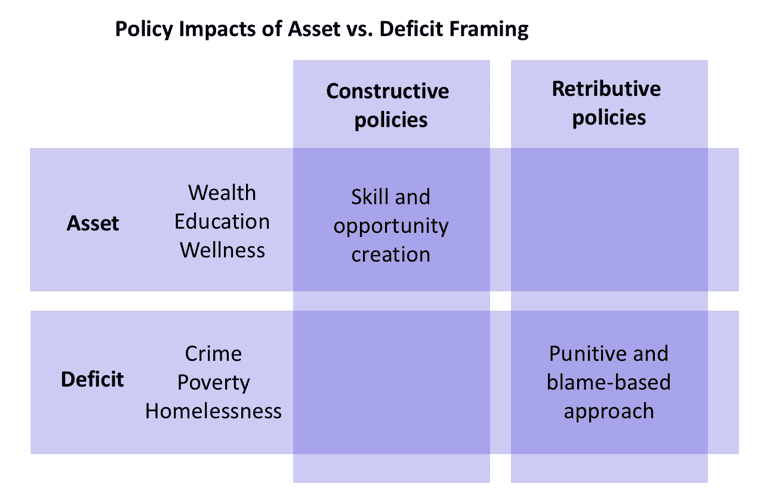Race and Data: Identifying Race-based Disparities
Like most industries, government-funded social services agencies have become increasingly data-driven in recent years. This increased use of data has allowed agencies to better understand the needs of the people they serve and allocate resources more effectively. However, as we outlined in our last blog post, there are risks to an overreliance on data, especially data that may itself be biased.
Here, we’ll discuss one of the ways that government can and should be using the myriad data they collect through administering social services to identify and address racial, ethnic, and geographic disparities: disaggregating outcome data. Outcome data is the data that demonstrates the impact of various government-funded services. If we were looking at workforce programs, an example of outcome data could be the rate at which program participants are placed in jobs or the number of people that pursue technical education. Disaggregation is the process of looking at these outcome data points, or the results of social services programs by subpopulation characteristics (e.g., race, gender, and education level) in order to uncover disparities in outcomes achievement and provide meaningful data on how to improve services for all populations.
The idea of disaggregated data isn’t new, as governments have been disaggregating data by race for a long time. However, much of this data disaggregation has been done to police or punish certain populations more than others. Typically, governments tend to disaggregate data by race in a way that assumes race is determinant of certain outcomes. This “at risk” framing, however, often ignores the hundreds of years of systemic barriers against certain groups, specifically people of color, and how these barriers still exist today. Focusing on deficits and how they are more present for certain racial groups (e.g., crime, poverty, and homelessness) can lead to retributive policies rather than a focus on assets (e.g., wealth, educational attainment, and wellness) that asks why similar assets aren’t created and shared uniformly. Through deficit-based data disaggregation over the years, governments have flagged certain geographic areas and racial and ethnic groups as “at risk”, which encouraged service delivery to be designed around behavior and created damaging narratives about those served.
We suggest that by starting first with outcomes and working backwards to understand why certain populations aren’t achieving these outcomes, governments and service providers can better understand which subpopulations might be better served through policy changes, service enhancements, increased services, or better customized services.

Race-based data analysis (i.e., using race as a lens) can highlight how the intersection of systemic inequality and discriminatory practices faced by communities of color reinforces disadvantage. In Broward County, the Children’s Services Council of Broward County (CSC Broward) uses disaggregated data to identify service needs and opportunities. Disaggregating outcome data by race has allowed the agency to identify disparate youth arrest outcomes. From 1998 to 2015, Broward County had a 67% decrease in overall youth arrests from 1999 to 2016. However, disaggregating this data allowed CSC Broward to determine that black youth arrests were over 5x more likely than white youth arrests. Of these arrests, 74% were black, 12% were Hispanic, and 14% were white. Focusing on these disparate outcomes and seeking answers to why these disparities exist enabled CSC Broward to highlight system-level barriers (e.g., implicit bias that results in overcriminalization of Black youth, not accounting for barriers created by housing and transportation costs, etc.) that need to be addressed to improve outcomes for Black youth. It has also driven CSC Broward to make a commitment to direct resources to this population in order to prioritize improving outcomes. Key to this analysis, though, is that CSC Broward chose to analyze this data with a systems-lens which highlighted a need to reassess policies and regulations that perpetuate bias in the County, rather than only directing resources to youth afterschool or diversion programs that might help these outcomes.
Making a commitment to the disaggregation of outcomes data and the deployment of insights to address systemic barriers is just the first step in shifting the focus to achieve equitable outcomes. A crucial component of this, though, is bringing community stakeholders to the table to ensure that data is accompanied by a local, anti-racist interpretation, as well as concrete opportunities for these groups to co-create solutions to these system-level barriers. The next post in the series will discuss tactics and opportunities to do just this.
